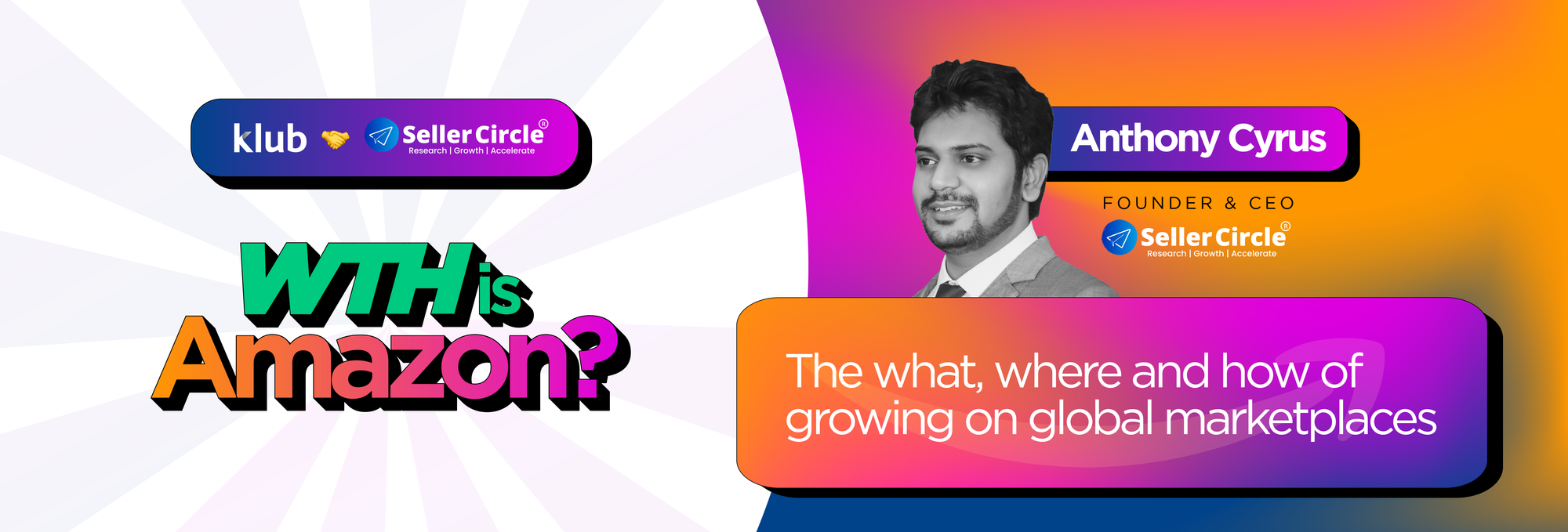
Why is growth hacking the game-changer for early-stage D2C startups?
Thu Oct 26 2023
5 min read
In today's digital landscape, growth hacking has become an indispensable tool for early-stage startups. As nascent companies grapple with the intricacies of scaling, understanding and adeptly implementing a growth strategy can be transformative. We spoke with Siddharth Jaiswal, founder at Seek Rewards, to deeply understand what growth hacking is.
What is growth hacking?
At its core, growth hacking transcends traditional marketing strategies, placing growth at the forefront. It refers to rapid experimentation across various marketing channels and product development methods to pinpoint the most influential business expansion methods.
Distinguishing features of growth hacking
- Focus on growth metrics: Contrary to traditional marketing, which encompasses objectives like branding, awareness, communication and PR, growth hacking is primarily dedicated to the growth of a particular metric or KPI, often called the North Star Metric for a business.
- Data-driven decision-making and experimentation: Growth hackers use tools like A/B testing and analytics to refine and assess strategies. They pick a trackable metric and run experiments on product (user experience), user flows, or product features to improve the metric from the baseline. Remember that the product here is mostly a tech product, not consumer goods like food, apparel or electronics.
- Technological leverage and product refinement: Growth hacking extensively employs digital tools and platforms from social media, web analytics and SEO to email, WhatsApp or SMS marketing. Marketing is a small part of the funnel for growth hackers - they work intensively on the product (app/website) experiences, features, use cases, etc.
- Innovative strategies for organic growth: Growth hackers are known for their unique, unconventional tactics. The most effective growth hackers find creative ways to drive unique behaviour in their target audience. A great example is Shazam suggesting its users hold the phone above their heads, and other people around would be curious to know what this person was doing - driving word-of-mouth referrals.
Now that we've distinguished growth hacking, let's discuss its importance.
Importance of having a growth strategy for early-stage D2C startups
Growth isn’t just about growing vanity metrics like traffic or unique visitors; it’s also about making strategic decisions that lead to sustainable growth and drive revenues.
But before diving into strategies, it's essential to lay the groundwork.
Pre-growth strategy checklist
Before delving into the tactics, startups need to have a clear understanding of several foundational elements:
- Your company: What makes your business stand out beyond products or services? What value do you bring to the table that's distinct and superior?
- Demographics: A successful startup understands its audience. What age, location, profession, or other demographic traits do they share?
- Customer persona: This is a detailed representation of your ideal customer. It's not just about demographics but understanding their motivations, pain points, and aspirations.
- Competitors: In the race to the top, ensure your target audience isn't a mirror image of your competitors. Differentiation is key.
- Psychographics: Beyond the surface-level data, what do your audiences love? What are their beliefs, values, and interests?
- Self-awareness: A common pitfall is assuming your audience will naturally resonate with your perspective. Always remember that your preferences might differ vastly from theirs.
With the essentials outlined, it's time to delve into the strategic framework.
Implementation of winning growth strategy for D2C brands
- Building brand awareness: Take inspiration from Bewakoof, which leveraged its first-mover advantage, pioneering the graphic clothing range online. They carved a niche using tools like WhatsApp marketing, influencer campaigns, and events.
- Community building: Sugar Cosmetics transformed the makeup industry by focusing on real-life ambassadors over celebrities. This move cultivated a community that resonated more authentically with their audience.Another prime example of community building comes from Bombay Shaving Company and Bombae. Founder Shantanu Deshpande initiated a YouTube channel for founders and investors to discuss entrepreneurship. This platform later transformed into a fundraising show, where entrepreneurs present their ideas to a syndicate of 50-80 Founders and Angel Investors led by Shantanu.
- Customer retention & engagement: While acquisition is essential, retention ensures longevity. Nurturing relationships with existing customers through non-spammy but personalised conversations can be more fruitful than constantly seeking new ones.
For example - Open Secret sends you a reminder with a discount code about 20 days after your order is delivered, nudging you to restock before snacks from your previous order finish.
- Acquisition, monetisation, & retention: This triad forms the backbone of any growth strategy. While attracting users is vital, monetising and retaining them ensures a healthy bottom line.
Channels for growth
To achieve the objectives mentioned, startups employ various growth channels.
The tools and platforms startups use to drive their objectives are critical:
- Content marketing: Finshots provides a stellar example. They changed how India perceives finance by demystifying complex financial terms through content. The result? Over 500,000 subscribers and significant growth for associated businesses like Ditto Insurance.Many D2C brand founders publish personally-branded content on social media platforms like Instagram, LinkedIn and YouTube to build and grow their brand’s recall and relatability.Founder-led Content Marketing - Examples of Brands growing through content where the founders are successful content creators themselves: Ankit Srivastava of Waywen and Parul Gulati of Nish Hair.
- Viral marketing: The digital age loves a viral moment. Brands like BlissClub have reaped the rewards of this, garnering massive online followings. Another notable mention is 4700BC, which had Twitter abuzz with its creative campaign around the character Mr. BC.Shashank Mehta of The Whole Truth Foods is known for appearing in his own ads and creating impressively viral content around his brand.
- Influencer marketing: D2C brands have seen immense success with influencer marketing and celebrity endorsements for brand awareness and consideration. However, influencer marketing remains a non-attributable channel with low trackable ROI. Some simple strategies implemented by brands have shown superb growth potential. Working with influencers across YouTube, Instagram and Twitter(X), brands have leveraged unique coupon codes as a growth hack for tracking the effectiveness of Influencer campaigns. In a growth hacking context - one should explore working with micro-influencers and prominent influencers to drive direct traffic and brand awareness. At the same time, platforms like One Impression, Good Creator Co. can help add a real method to the madness with predictable ROI and pay-for-performance campaigns.Example - HYPD is a platform that converts influencers into affiliates with trackable sales and fixed commissions.
- Use referral marketing: Referral marketing is a great way to get new customers without spending much on advertising. Encourage your existing customers to refer their friends and family to your business.Shopify Tools like Nector and Smile can help you build a simple referral marketing campaign where you reward the referrer or referee or both with a discount or free product. This is a widely adopted tactic across D2C brands, and one needs to ensure the incentives are strong enough for users to try to refer someone else to earn the reward.
- Conduct and participate in events: Attending and speaking at events is a great way to network with potential customers and partners. You can also use events to promote your products or services and generate leads.
- Use adjacent markets: Adjacent markets are similar to your target market. You can reach a new set of potential customers by targeting adjacent markets. Co-branding and collaborating with brands without direct competition can help you build an audience and acquire customers.
- Campaign orchestration channels: With an array of digital channels available, brands can connect with audiences wherever they are, from emails and web push notifications to SMS, WhatsApp, Google AdWords, and social platforms like Facebook.
Growth hacking is a dynamic, multi-faceted approach essential in the fast-paced digital era. For D2C startups aiming to make a mark, understanding and adeptly implementing these principles isn't merely about growth—it's about achieving sustainable growth. Embracing the outlined tactics and strategies can be the difference between being a fleeting sensation and establishing a lasting success story.








